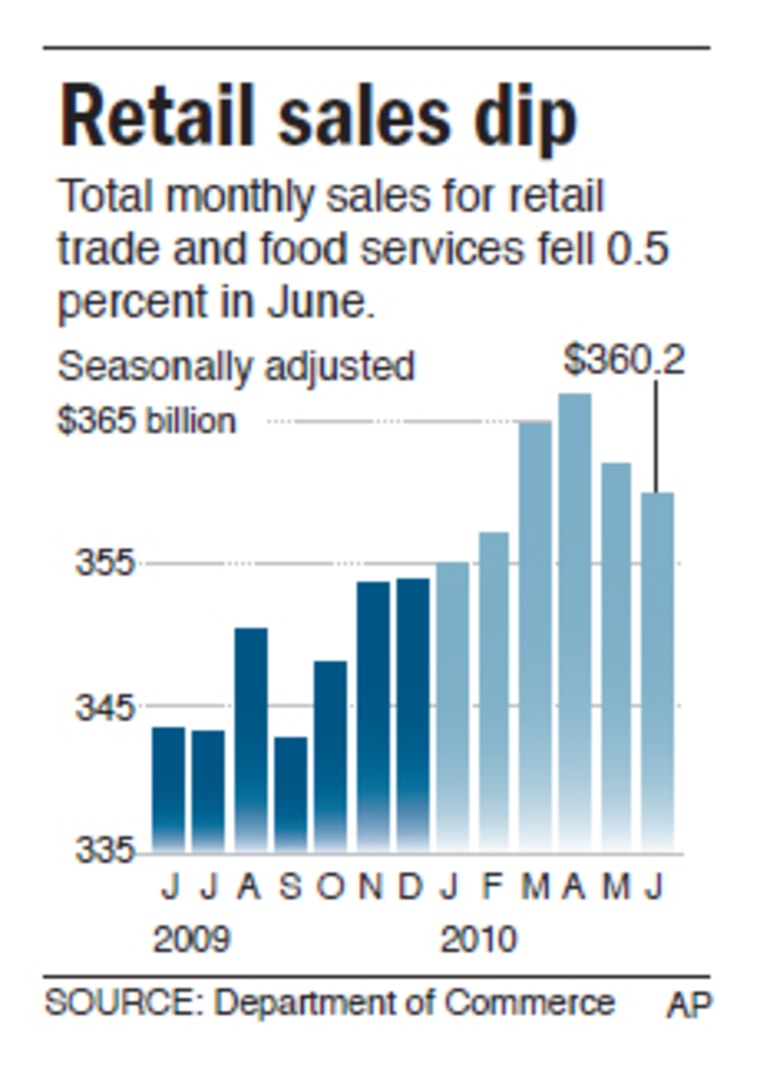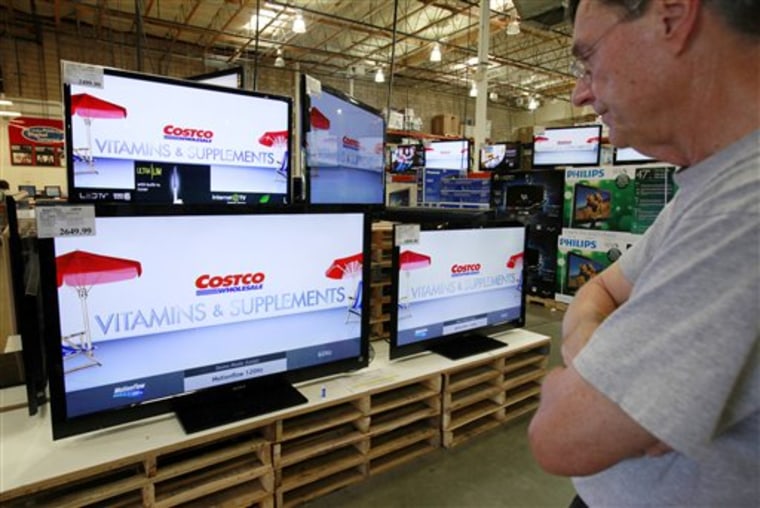Americans gave retailers a respectable spring selling season, resulting in a slew of stores raising their earnings outlooks and providing an encouraging sign that the consumer rebound is continuing.
As merchants released April revenue figures Thursday that were more muted than March's torrid pace, discounters including Costco Wholesale Corp. and BJ's Wholesale Club Inc. as well as luxury retailers emerged as the biggest winners. Limited Brands Inc. and Macy's Inc. had solid gains. Teen merchants including American Eagle Outfitters Inc. and Abercrombie & Fitch Co. continue to struggle with declines.
The figures are based on revenue at stores open at least a year and are considered a key indicator of a retailer's health because they exclude growth at stores that open or close during the year.
"Consumers took a breather in April," said Ken Perkins, president of RetailMetrics, a research firm. "But overall, retailers have to be pleased with the spring selling season."
Still, Perkins added that the consumer spending recovery is still likely to be slow amid persistent high unemployment and tight credit.
Analysts had expected last month to see a slowdown because an early Easter had pumped up sales in March by as much as 5 percentage points while depressing business by the same amount in April. But the results came in weaker than expected, with many retailers missing Wall Street estimates, according to Thomson Reuters. Analysts are studying the combined March and April receipts to get a better gauge of consumer spending. Cooler weather last month also played a hand in hurting sales of seasonal goods such as shorts.

According to the International Council of Shopping Centers Index of 30 retailers, the key measure was up 0.8 percent, compared with a 2.7 percent decline a year ago. That followed a 9 percent gain in March, the strongest since March 1999. For the March and April months combined, the index rose 4.9 percent, well above the average pace of 4.1 percent since January.
Improving profits
"The real takeaway is that profitability continued to improve on the healthy underlying demand," said Michael P. Niemira, chief economist at ICSC.
In fact, the month ended what's expected to be a decent first quarter for many retailers. A number of merchants, including Target Corp., Gap Inc., J.C. Penney Co. and Macy's Inc. all raised their earnings outlook amid encouraging signs that they didn't have to discount aggressively because shoppers were buying full-priced merchandise.
Major retailers are scheduled to start reporting financial results starting next week.
And even as the economy continues to improve, consumers are still cautious as they open their wallets more. Consumers' confidence in the economy rose last month, but the Conference Board business group's index remains below the level that's considered healthy.
The Labor Department said Thursday that applications for unemployment benefits dropped for a third straight week, decreasing by 7,000 to 444,000. That shows that the job market is slowly improving, but unemployment remained high. The government is expected to report on Friday that the jobless rate remained at 9.7 percent even as employers added 200,000 jobs last month.
Costco's April revenue at stores open at least a year rose 11 percent. Analysts surveyed by Thomson Reuters expected an 11.2 percent increase.
BJ's Wholesale reported a 4.6 percent increase in revenue at stores opened at least a year, helped by consumers filling their gas tanks. Analysts had expected a 6 percent increase.
Target Corp. suffered a 5.9 percent drop in revenue at stores opened at least a year, but for the combined March and April period, the retailer said it posted a 3.0 percent gain, which it said was its strongest performance in two years.
"We believe that a greater-than-expected portion of sales that otherwise would have occurred in April were pulled forward into March," Gregg Steinhafel, chairman, president and CEO, said in a statement. Still, Target said its net income for its first quarter should meet or exceed analysts' expectations because sales of merchandise in high-profit categories remained strong.
Wal-Mart Stores Inc., the world's largest retailer, stopped reporting monthly results last year.
Among department stores, Macy's Inc. said revenue at stores opened at least a year rose 1.1 percent, better than the 0.4 percent decline that analysts had expected. For March and April combined, Macy's enjoyed a 6.2 percent gain. J.C. Penney Co. posted a 3.3 percent decline in revenue at stores open at least a year, below the 0.8 percent dip that analysts had expected.
Luxury retailer Saks Inc. posted a 3.2 percent gain. The results were below the 4.4 percent estimate, but business was done with less discounting than a year ago. The company said that it lowered the discount on its four-day Friends & Family event to 20 percent from 25 percent and reduced another sales event to one day last month from four days a year ago.
Upscale Nordstrom Inc. enjoyed a 7.5 percent increase, better than the 6.2 percent gain that was predicted.
Gap reported a 3 percent decline in revenue at stores opened at least a year, well below the 1.3 percent increase that analysts had expected. But the fashion chain, helped particularly by rebounding business at Old Navy, said that it ended the first quarter with a gain of 4 percent, resulting in the chain boosting earnings guidance for the first quarter.
Teen retailers suffered. Abercrombie & Fitch's 7 percent drop was worse than the 2.3 percent decline estimated by Wall Street estimates. American Eagle had a 6 percent drop, worse than the 3.9 percent decline expected.
